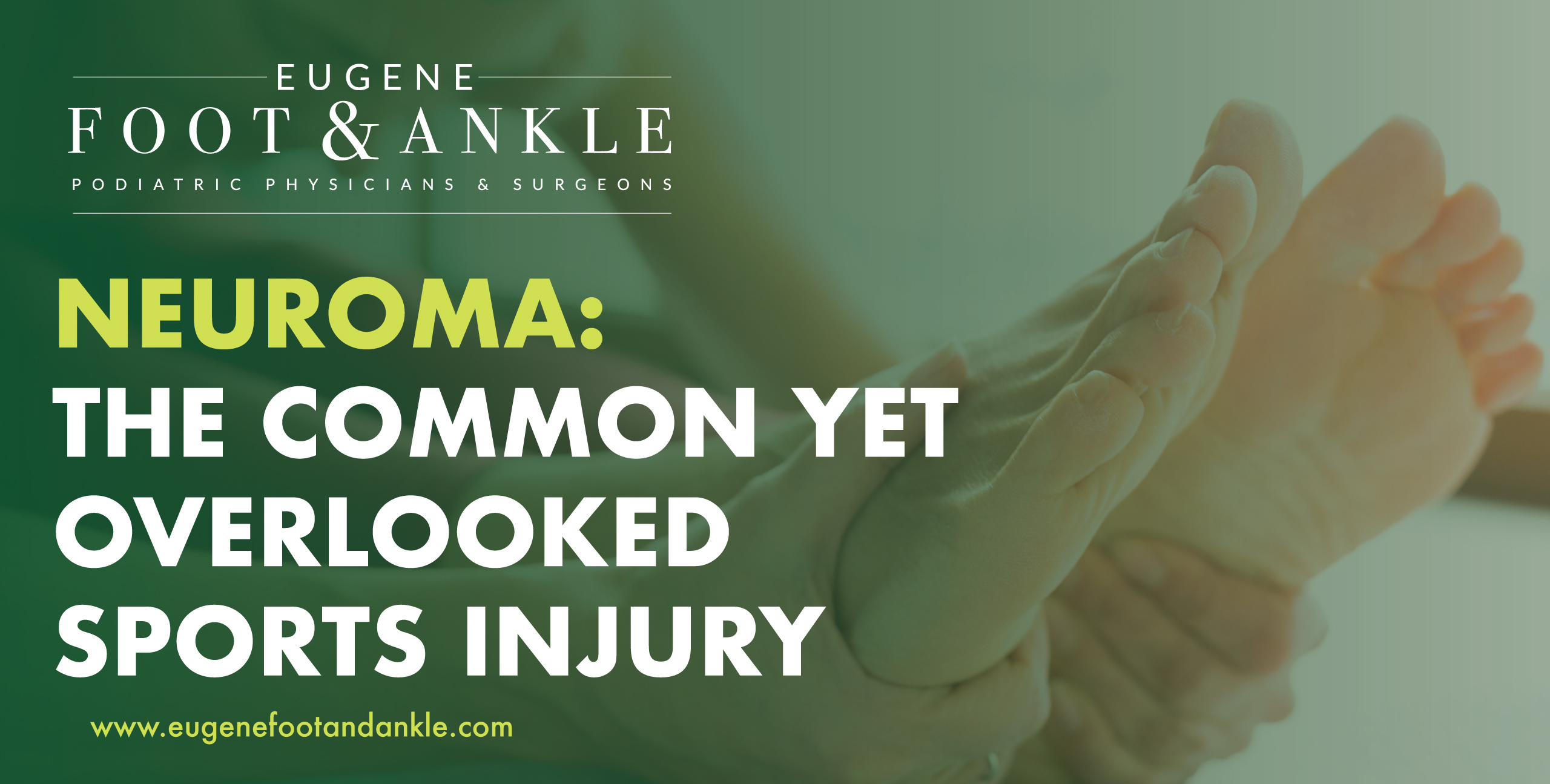Neuroma: The Common Yet Overlooked Sports Injury
Have you ever been walking when you suddenly feel like you’re stepping on an invisible pebble? Or perhaps you’re an athlete, bothered by a burning sensation in your toes that seems to flare up with every stride you take. Today, we’re exploring a common, yet often overlooked, condition that may be causing these symptoms – a Neuroma.

The Quick Rundown on a Neuroma
Characterized by the thickening of nerve tissue, neuroma is a benign foot condition, often occurring between the third and fourth toes. This thickened tissue triggers a range of uncomfortable symptoms. Apart from the pebble-like sensation and burning pain, individuals with neuroma may also experience numbness or tingling in their toes. This condition can significantly affect performance, making every stride painful.
These discomforting neuroma symptoms intensify when standing, walking, or participating in high-impact sports, significantly hampering athletic performance and normal day-to-day activities. Often, relief is only found when weight is removed from the foot or when the shoes are removed, further emphasizing the need for proper diagnosis and treatment.
The Causes Behind a Neuroma
Neuromas are typically induced by factors that cause undue stress or irritation to the nerves in your feet. Repetitive activities like playing high-impact sports or consistently wearing high-heeled shoes put constant strain on the ball of your foot. Additionally, underlying foot deformities like bunions, flat feet, or hammertoes can also stimulate the development of a neuroma. Moreover, any foot injury or trauma, whether from an accident or surgical intervention, can potentially lead to a neuroma. In essence, it’s a combination of your activities, footwear, and foot structure that often contributes to this condition.
Who’s at Risk?
Athletes, especially runners and dancers, frequently place repetitive stress on their feet, leading to nerve irritation and subsequent Neuromas. Similarly, high heels, known for squeezing the front of the foot and increased pressure, are also known to trigger this condition. In addition to athletes and high-heel wearers, people with jobs requiring extended standing or walking periods—like nurses or retail workers—are also at higher risk. Pair this with a personal history of foot abnormalities, including bunions or hammertoes, and the probability of Neuroma increases significantly. Awareness of these risks is a stride toward preventing this uncomfortable foot condition. Remember, Neuromas don’t play favorites—it targets the ill-prepared.

How Podiatrists Approach the Treatment for a Neuroma
When treating a Neuroma, especially in athletes, podiatrists employ a two-pronged approach: prevention and treatment. For sports injuries, preventive measures could include a comprehensive analysis of an athlete’s running form, proper shoe selection, and personalized advice on foot care. The treatment, however, is explicitly tailored to the individual’s condition. Initial steps often involve conservative therapies such as padding, taping, or orthotic devices that help alleviate pressure on the nerve.
Strengthening the feet and toes through targeted exercises is critical to the recommended physical therapy. If these measures prove inadequate, podiatrists may resort to advanced techniques, such as corticosteroid injections, to reduce inflammation or, in stubborn cases, surgical intervention. Remember, a podiatrist’s goal is to help you get back on your feet, whether you’re a sprinter on the track or a marathoner in life.
Treating Neuroma at Eugene Foot and Ankle
At Eugene Foot and Ankle, we recognize that addressing a neuroma is just one part of a broader commitment to overall foot health and well-being, especially for those with active lifestyles. If you face a sports-related injury, taking immediate action is essential. The first step is to cease any activity that may have caused the injury, as continuing could exacerbate the problem and lead to further complications.
Our team at Eugene Foot and Ankle is well-versed in providing timely and effective care for sports injuries, including neuromas. Dr. McCourt, a seasoned rock climber, ski patroller, and ultramarathon performer, understands the frustration of sports-related setbacks. His personal experience allows him to empathize with athletes’ unique challenges in pursuing their goals.
When you call us, Dr. McCourt and our team will guide you through a care plan tailored to your needs and activity level. Treatments may involve utilizing custom orthotics to alleviate excess pressure on affected areas or adjusting training regimens to reduce impact temporarily. We prioritize your immediate recovery and work toward enhancing your long-term athletic performance.
Remember, proper recovery from sports injuries lays the foundation for sustained benefits. Don’t let neuroma or any sports-related ailment hinder your active lifestyle. Call the Eugene Foot and Ankle office at (541) 683-3351 to schedule an appointment. Let’s get you back on your feet and back into action safely and effectively!
Contact Us
Eugene
P: (541) 683-3351
F: (541) 683-6440
Hours:
Monday............ 8:00am - 5:00pm
Tuesday............ 8:00am - 5:00pm
Wednesday............ 8:00am - 5:00pm
Thursday............ 8:00am - 5:00pm
Friday............ 8:00am - 4:00pm (Only available on phones)
Closed for lunch from 12pm - 1pm and closed until 1:30pm on Tuesdays
© Copyright 2024 Eugene Foot and Ankle. All Rights Reserved. | Privacy Policy.
